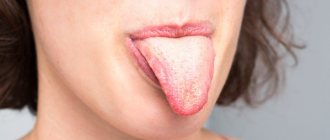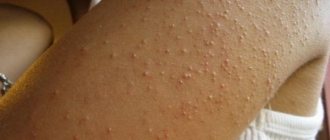What is mucus?
Mucus is a clear or yellowish jelly-like substance that is normally mixed with stool and passed during bowel movements. It is almost impossible to notice it with the naked eye.
Normally, mucus performs a number of functions in the body in adults and children:
- envelops the intestinal walls, allowing feces to leave the body freely and painlessly;
- provides protection to the intestinal walls, because if the stool is very hard, it can lead to cracks or ruptures in the intestines, but we previously wrote how to soften the stool;
- The mucus that is in the lungs, nasopharynx or other organs in which it performs its functions comes out along with the feces.
Mucus in the stool can be of pathological or non-pathological origin. Non-pathological mucus usually has a whitish or yellowish tint, sometimes clearly white, and with pathology it can be pink, yellow, brown, black, orange, red, bloody, or simply mixed with blood in the form of clots or veins, or in the form of a thread.
With pathology, a lot of mucus will come out or even just mucus will come out instead of feces.
This phenomenon cannot be ignored and you should immediately consult a doctor for advice and treatment. Only a specialist will determine why feces and mucus leave the intestines and how this can be corrected.
Types of mucus discharge in women
Vaginal mucus is common to everyone. This is a characteristic feature of a woman’s body. As a rule, mucus of various types from the vagina is normal and has an explainable origin.
Normal discharge has the following symptoms:
- May have a transparent, white or red color;
- Do not cause redness, itching or burning;
- They have no odor;
- Have a small quantity;
- They are asymptomatic - in the absence of fever, pain and discomfort.
It should be noted that the norm is when the amount is small. Heavy discharge should be a wake-up call for a woman.
Mucous fluid in general is a sign of the normal functioning of a woman’s appendages. This is a standard indicator for any age range.
Starting from the 1st month of life, every representative of the weaker half of humanity experiences mucus discharge, which is caused by hormonal changes. In the first month of life, mucus is a residual phenomenon of the destruction of maternal hormones.
Toward the maturation of one's own sex hormones, mucus appears again, more often during puberty.
As a rule, mucus production begins one year before the onset of menstruation. By the age of 8, the mucus looks like rice water with a sour smell.
As soon as the menstrual cycle begins to establish itself, the discharge will become cyclical and its appearance will change. In the first half of the cycle, mucus is usually moderate, but by the second phase its consistency thickens.
It is customary to divide discharge depending on its type:
- White. They can also be called leucorrhoea. The causes of their occurrence may be vaginitis, colpitis, adnexitis. Their appearance is also observed when taking oral contraceptives, with congestion in the pelvic area, with violation of personal hygiene rules, as well as with a sedentary lifestyle;
- Transparent. They depend on the amount of hormones in the body, as well as on the phase of the menstrual cycle. Their presence indicates the functioning of the ovaries. The composition of such secretions includes fragments of cells and lymph transudate, as well as microorganisms, mucus from the cervical canal and residues from the work of the sebaceous and sweat glands;
- Mucous. Such discharge is not a pathology as long as it is colorless and odorless. Otherwise, it is necessary to undergo a comprehensive analysis and consult with your doctor;
- Watery.
With normal development, discharge that does not require intervention from a specialist can be:
- Scanty, in the form of a creamy or jelly-like substance. Inherent in the second phase of the cycle;
- Transparent discharge is characteristic of the phase before ovulation;
- Mucus with bloody streaks is characteristic of the period after ovulation.
- Creamy mucous clots – typical before menstruation;
- White clots - when taking oral contraceptives;
- Pink ichor - lochia, typical in the postpartum period;
- Creamy discharge during unprotected intercourse or when using a condom. Such discharge is odorless and does not cause itching.
Suppositories for hemorrhoids: inexpensive and effective are discussed in our article on the website.
Instructions for use of the drug Arbidol can be found in this article.
From here you will learn how to properly use Aflubin drops.
Causes of mucus in stool
A person may notice an increased amount of mucus or its color change when feeling normal or when something is bothering him.
He may also note that after the enema, stool and mucus are released, which either floats on the surface or is mixed with the stool. If a person consumes large quantities of fermented milk products, oatmeal, or, conversely, starves for a long time or does not receive protein foods, then mucus may appear in the stool. This is not a pathological process and there is nothing to worry about. It is enough to change your diet and everything will return to normal.
But if there are no problems in nutrition, then this indicates the development of a fungal, infectious or viral disease of the body, and not just the gastrointestinal tract.
Such diseases include:
- diverticulitis, when the intestinal lining bulges inward;
- ulcer of the stomach, duodenum or any part of the intestine (small, colon or rectum);
- tumor neoplasms of the intestine, the appearance of polyps;
- cracks in the rectum, hemorrhoids;
- dysbiosis, when the normal intestinal microflora is destroyed, food is not completely digested and irritates the mucous layer, causing mucus to come out along with feces;
- intestinal obstruction, which occurs for various reasons: constipation, the formation of adhesions or cracks, all this can provoke the disease;
One type of intestinal obstruction - Irritable bowel syndrome is a specific condition that affects the entire intestinal tract. Frequent spasms and weak secretion of enzymes cause a violent reaction in the body, causing feces to be released with mucus or even blood;
- rectal cancer;
- intolerance of the body to any food products;
- acute respiratory infections, there is no pathology as such, because the mucus that comes out is the one that is swallowed by a person from the nasopharynx and, when the runny nose is cured, then the mucus from the feces will also disappear;
- infectious diseases caused by salmonella, shigella or other bacteria;
- fungal infection of the body;
- insufficient production of enzymes by the gastrointestinal tract.
Gastrointestinal enzymes
Symptoms of the disease
Usually people detect mucus in their stool not by chance, but in cases where something bothers them. That is, a large amount of mucus is one of the symptoms that signal the development of the disease.
In addition, patients usually feel:
Blood in stool
- severe abdominal pain, cramps;
- bloating and excessive gas formation;
- abdominal tightness, constipation or diarrhea;
- in severe cases, vomiting or other signs of intoxication;
- pain during defecation;
- blood or pus in the stool, possibly undigested food debris;
- change in the shape and consistency of feces, its nonspecific smell;
- mucus or bloody substance may remain on the patient's toilet paper or underwear;
- for respiratory diseases, characteristic symptoms of cough, nasal congestion, rhinitis and more;
- headaches and fatigue.
If you find these symptoms, as well as ichor or white discharge with feces, you should immediately consult a doctor and get tested to determine the cause of this phenomenon.
What it is and how to treat it can only be told by a competent specialist, and there is no need to self-medicate.
Diagnostics
Mucus in the stool of an adult is sometimes the first sign of a serious disease of the human body, and most often specifically of the gastrointestinal tract. To recognize it in the early stages, you need to consult a therapist. He will study your symptoms, the presence of not only mucus, but also other signs of the disease, find out the frequency of stool and its nature, and refer you to a specialized specialist (gastroenterologist, proctologist, oncologist). The specialist doctor will definitely prescribe a number of tests and examine the patient.
Studies to determine the causes of mucus in the stool include:
- collection of feces for coprogram;
- analysis for eggworms and protozoa;
- more specific tests for helminthic infestations (opisthorchiasis, strongyloidiasis, amebiasis, fasciliasis) as prescribed by a doctor;
- Ultrasound of the abdominal organs (including the intestines);
- sigmoidoscopy;
- colonoscopy;
- anoscopy;
- endoscopy;
- computed or magnetic resonance imaging;
- blood test for the presence of viral diseases;
- Additionally, you can take biochemical blood tests, as well as a general clinical blood test.
Colonoscopy helps identify dangerous intestinal diseases.
After studying the results of the examinations, the doctor will diagnose the patient and prescribe appropriate treatment, which will be selected individually for the given case, taking into account the characteristics of the patient’s body.
Causes
All causes can be divided into two large groups: non-pathological (physiological) and pathological (as a result of a child’s illness).
Non-pathological
Mucus is a normal substrate found in feces. It is necessary to facilitate the passage of feces through the intestines, reducing friction and damage to the mucous membrane by chyme. In addition, mucus has protective properties, since it contains substances that can destroy pathogenic microflora.
Nutrition
Poor nutrition can cause mucus to appear in the stool in the following cases:
- Violation of the mother's diet during breastfeeding. Any unauthorized product may cause irritation in a child's intestines in response to the unknown food.
- Late introduction of complementary foods. The baby’s intestines are sterile at birth; the enzymatic system also develops gradually, adapting to new foods and a changing diet. The appearance of mucus indicates that the child is not physiologically ready for new food; it is still necessary to wait for the pancreatic enzymes to mature and for the completion of colonization of the intestines with beneficial microflora.
- Fluid deficiency. Low water consumption leads to compaction of stool, especially if the child overeats. The intestines try to push through dense waste products. To prevent trauma to the mucous membrane, the amount of mucus increases.
- Milk. With lactase deficiency, a deficiency of an enzyme capable of processing milk fats, a baby in the first six months of life often has mucus in the stool. This is not always a pathology, it’s just that enzymes are prescribed at first until the child’s pancreas adapts.
Medicines
Medicinal substances by themselves do not increase mucus production. However, when taking some medications, it is possible to develop increased mucus secretion.
- Antibiotics . Violation of the rules for taking these medications (uncontrolled, chaotic, unmotivated) leads to the formation of dysbiosis. It is not the antibacterial drug itself that leads to an increase in mucus volumes, but its side effects.
- Stool-fixing drugs (Smecta, Activated carbon, Atoxil). In case of an overdose, mucus may appear, which is necessary to facilitate the passage of feces through the intestinal tube and the act of defecation.
We recommend reading:
Diet for diarrhea: nutritional principles, foods and menu for the week
Runny nose
Since the child does not yet know how to fully and correctly blow his nose in the stool, mucus can often be found in any respiratory disease. The child swallows the snot, and it passes through the entire gastrointestinal tract in transit.
It is important not to miss the manifestations of enterovirus infection, in which mucus in the stool is the result of the virus affecting the intestinal mucosa, and not just snot. The main difference is the appearance of dyspeptic manifestations in the form of flatulence, diarrhea, nausea and even vomiting.
Pathological causes
Most often, when mucus appears in a child’s stool, you should think about pathological changes and contact a pediatrician to clarify the pathology. This is especially true in cases where mucus is not the only clinical sign, but other symptoms are also present.
Inflammatory bowel pathologies
Inflammatory diseases include:
- Infectious diseases. The main cause of inflammation of the mucous membrane is the pathological effect of microorganisms on it. These can be viruses (for enteroviral diseases), and bacteria, fungi and even protozoa (for example, amoebiasis). Mucus is most often colored: in case of viral pathologies it is transparent, in case of bacterial microflora it is greenish-yellow purulent in nature, in case of fungal invasion it is white flakes, in case of amoebeasis it sometimes takes on the appearance of raspberry jelly.
- Autoimmune pathologies. Diseases such as ulcerative colitis or Crohn's disease lead to autoimmune damage to the intestinal wall by one's own cells. Defense systems do not distinguish, in this case, their tissues from the pathological substrate. This is the severity of the pathology, since for treatment it is necessary, in fact, to kill the child’s immunity.
Anatomical developmental abnormalities
Anatomical defects that can cause the appearance of mucus include:
- Dolichocolon (dolichosigma). An additional loop of intestinal segment leads to the formation of fecal congestions, which are compacted within several days and then move through the intestines with difficulty.
- Megacolon. The expansion of the intestinal ampulla leads to the accumulation of a large volume of feces in this area, which subsequently has difficulty passing further without additional shock absorption and protection of the mucous membrane with a slippery lubricant.
- Hirschsprung's disease. The absence of a nerve ganglion in a certain area of the intestine, which stimulates the work of muscle fibers and maintains their tone, leads to its expansion. In the future, only mucus helps push the feces further towards the exit.
We recommend reading:
Fecal incontinence (encopresis) in children: causes and treatment methods
Other reasons
Other pathological causes that can lead to mucus in the stool include:
- Dysbiosis. The dissociation of the balance of beneficial and pathogenic microflora towards the predominance of the latter increases the risk of developing an intestinal infection, significantly disrupts digestion and reduces the protective reactivity of the child’s entire body. So this condition has the right to be considered pathological. It leads to instability of the stool (it can be either liquid or too dense) and is often accompanied by the appearance of mucus.
- Worms. Mechanical irritation of the mucous membrane by worms leads to increased secretion of mucus, which is necessary, first of all, to protect the mucous membrane.
- Acute surgical pathologies. These include intussusception in early childhood, diverticulitis, and appendicitis. Diseases lead to mechanical damage to the mucous membrane, which becomes inflamed with increased mucus secretion.











